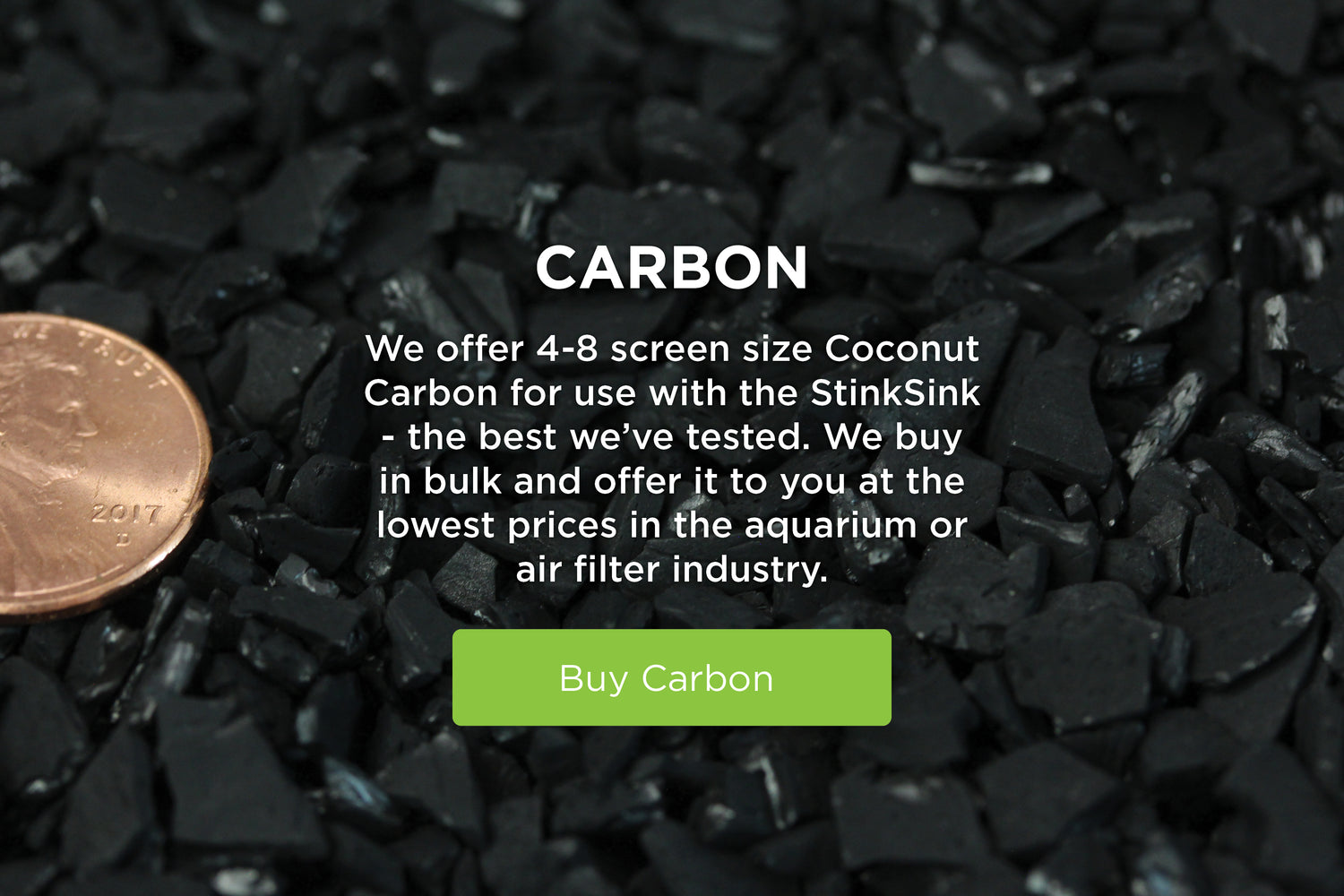About Our Carbon
There are a lot of different types of carbon out there, some designed for fluid and some for air. We’ve tested a lot of them. For the StinkSink, we found a sweet spot in cost and carbon particle size that will reduce the stink, but will also not block airflow and create back pressure on your skimmer - effecting its performance. The carbon we sell is a 4-8 screen size coconut shell based carbon, specifically used for air filtration. We like coconut-based carbon over coal-based carbon due to its generally lower dust content, and its sustainability over other mined options. We buy it in bulk and pass the savings on to you - our cost of about $5.50 per pound of carbon is lower than just about any aquarium or air filtration retailer out there. You will save significantly on shipping if you order an extra carbon fill with your StinkSink as well, over ordering new carbon separately.
If you are considering some of the other readily available carbons, bituminous or lignite (often referred to as GAC, or Granular Activated Carbon) or the larger pelletized carbons, they work less well. They have a larger particle size, usually, then the carbon we offer, and are designed more for water filtration. They are also often a less sustainable choice than coconut carbon. Due to the many variables involved in using your own carbon, note that our performance guarantee does not extend to those purchasing and using the StinkSink without our carbon.
Please do not use the common “Rox 8.0” fine pelletized carbon used to filter aquarium water, as it will leak from the holes in the StinkSink, and may cause back pressure on the air flow in your skimmer since it is more densely packed.
If using your own carbon, you can use the guidelines below to find the cups of carbon needed for your fill:
Skimmer Lid Diameter | Cups of Carbon (rounded up to the nearest cup)
5" | 3 cups
6" | 5 cups
7" | 7 cups
8" | 9 cups
9" | 11 cups
10" | 13 cups
11" | 16 cups
12" | 19 cups
13" | 22 cups
(we'll stop here, but we can make units up to 24" in diameter)
Maintaining Your Carbon Fill
The air from your skimmer is inevitably very humid, and there is no avoiding that over time that humid air will moisten the carbon and reduce the amount of odor it can adsorb. (yes, aDsorb) Drying your carbon will extend its life, and drying the carbon in an oven can actually regenerate, to some degree, its adsorption characteristics.
The StinkSink chamber has been made out of clear polycarbonate on purpose, versus an opaque material, so you can monitor the amount of condensation, and gauge when it may be time to dry your carbon. It is normal for condensation to collect on the inner wall of the vessel. The temperature gradient between your aquarium (skimmer air temp) and the room air will determine the amount of condensation - i.e. if you keep your house at 65 degrees vs. 75 degrees, there will be more condensation. Often there will be condensation on the vessel and the carbon will remain largely dry, but eventually the carbon will become moist.
Some tips to prolong the life of your carbon fill:
1) Shake the StinkSink gently to redistribute the carbon when you clean or empty your skimmer cup, hopefully weekly.
2) Once a month, remove the lid from the StinkSink, and see if the carbon is moist. The carbon will wet from the bottom up, so check the entire depth of the carbon for moisture. If visibly moist, empty the carbon onto a cookie sheet and let it dry out. Ideally, you can also place the cookie sheet with carbon in an oven on low at 200 degrees Fahrenheit for an hour to dry and refresh the carbon. Let it cool before adding it back to the StinkSink. Do not place your StinkSink in the oven.
How long will your carbon last?
A carbon fill will usually last between 6-12 months. That is highly variable, however, depending on your skimmer airflow, how often you empty the cup and clean it, and how you maintain your carbon fill. Just trust your nose.

